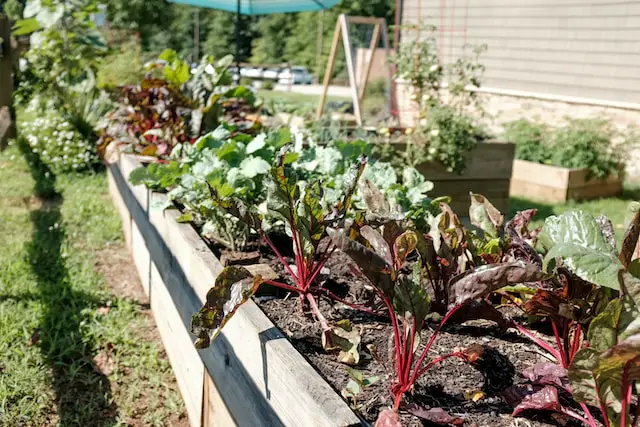As the days become longer and warmer, it’s the perfect time to add an abundance of fresh produce from your garden or local farmers market into seasonal recipes. From crisp salads filled with summer vegetables to comforting casseroles that make excellent use of late-summer squash, there are many delicious ways to bring homegrown flavors onto your plate.
In this article, we’ll explore some creative ideas for incorporating fresh ingredients into wholesome meals – so dig out your most colorful cookware and get ready for a delectable journey through the best seasonal recipes.
Discovering the joys of farm-to-table cooking – why it’s important to source local, fresh ingredients
There’s nothing quite like the taste of a freshly picked tomato or a just-laid egg, and that’s why farm-to-table cooking should be on everyone’s radar. Sourcing ingredients locally not only supports local farmers but also ensures that the food we eat is as fresh and nutritious as possible. And let’s be honest, who doesn’t love whipping up a meal that includes ingredients just harvested a few miles away?
A certain charm and satisfaction come with cooking with local ingredients – it’s like taking a piece of the farm and bringing it into your home. So next time you’re at the farmers’ market or drive past a roadside stand, take a moment to appreciate the bounty of fresh produce available at your fingertips. Check out these home chef reviews to find out more about what home chefs are saying about their seasonal cooking experiences.
How to grow and maintain your vegetable garden
Growing your vegetables is a great way to maximize the freshness of your ingredients and ensure you have an abundance of available seasonal produce. If you’re new to gardening, start small and pick easy-to-grow options like lettuce, tomatoes, herbs, peppers, or beans – this will give you plenty of practice before tackling more challenging projects like squash and root vegetables.
Plan where your garden will go in the yard to get started – sunny spots are usually the best choice for growing most vegetables. After that’s been decided, gather some high-quality soil (or make your compost if you prefer) and start planting. Be sure to pull out any weeds as soon as possible, so they don’t have a chance to overtake the garden. Throughout the growing season, water regularly and watch for any pests that may cause damage.
Preparing your pantry for seasonal recipes
To make the most of seasonal recipes, it’s important to have a well-stocked pantry. Stock up on basics like canned tomatoes, legumes, grains, and stock – these items will form the backbone of many delicious meals. Don’t forget about condiments like olive oil, vinegar, and mustard – these can take your dishes from bland to flavorful in no time.
Consider adding exotic spices or herbs specific to a particular season if you want something special. For example, thyme is fantastic for summer salads, while paprika works wonderfully with winter soups. Other must-haves include honey, lemon juice, and sugar – all of which can add an extra layer of flavor when used correctly.
Strategies for using vegetables in unique dishes that are both nutritious and delicious
One of the best things about seasonal recipes is that they constantly change. It means you have many opportunities to experiment with different ingredients and combinations – plus, it’s a great way to get creative in the kitchen.
When incorporating vegetables into dishes, try to think outside the box and be bold in mixing and matching flavors. For example, Brussels sprouts can be roasted with garlic or bacon for an exciting side dish. Or chopped zucchini can be added to a tomato sauce for an extra boost of flavor. The possibilities are endless – use your imagination and let your taste buds guide you.
Creating balanced meals with homegrown produce
The best way to ensure that your meals are balanced and nutritious is to incorporate a variety of vegetables, proteins, and grains into each dish. A great way to do this is by selecting local produce that’s in season. For example, if it’s summertime, opt for tomatoes, peppers, and squash – these can be cooked with lean protein like chicken or fish for an easy dinner solution.
In the fall, you might choose root vegetables like potatoes, turnips, and carrots and hearty greens like kale or spinach. Combine these with beans, nuts, or tofu for a complete meal that will satisfy any appetite. You’ll get the freshest and tastiest meal possible by creating dishes with ingredients from around your area (and maybe even from your backyard).
Tips for preserving food from your garden for future use
Homegrown produce is beautiful; however, harvesting all of your crops at once can be overwhelming. To avoid wasting food and ensure you have plenty to last throughout the year, it’s essential to think ahead and preserve some of your harvests.
Pickling and fermenting are great options for keeping foods longer – cucumbers and cabbage make delicious pickles, while garlic and onions can be easily fermented for future dishes. If you’re feeling more adventurous, try making jams or jellies with seasonal fruits – these will keep in the fridge for up to six months. Freezing is also an option – blanch vegetables before freezing them so they don’t lose flavor or texture over time.




